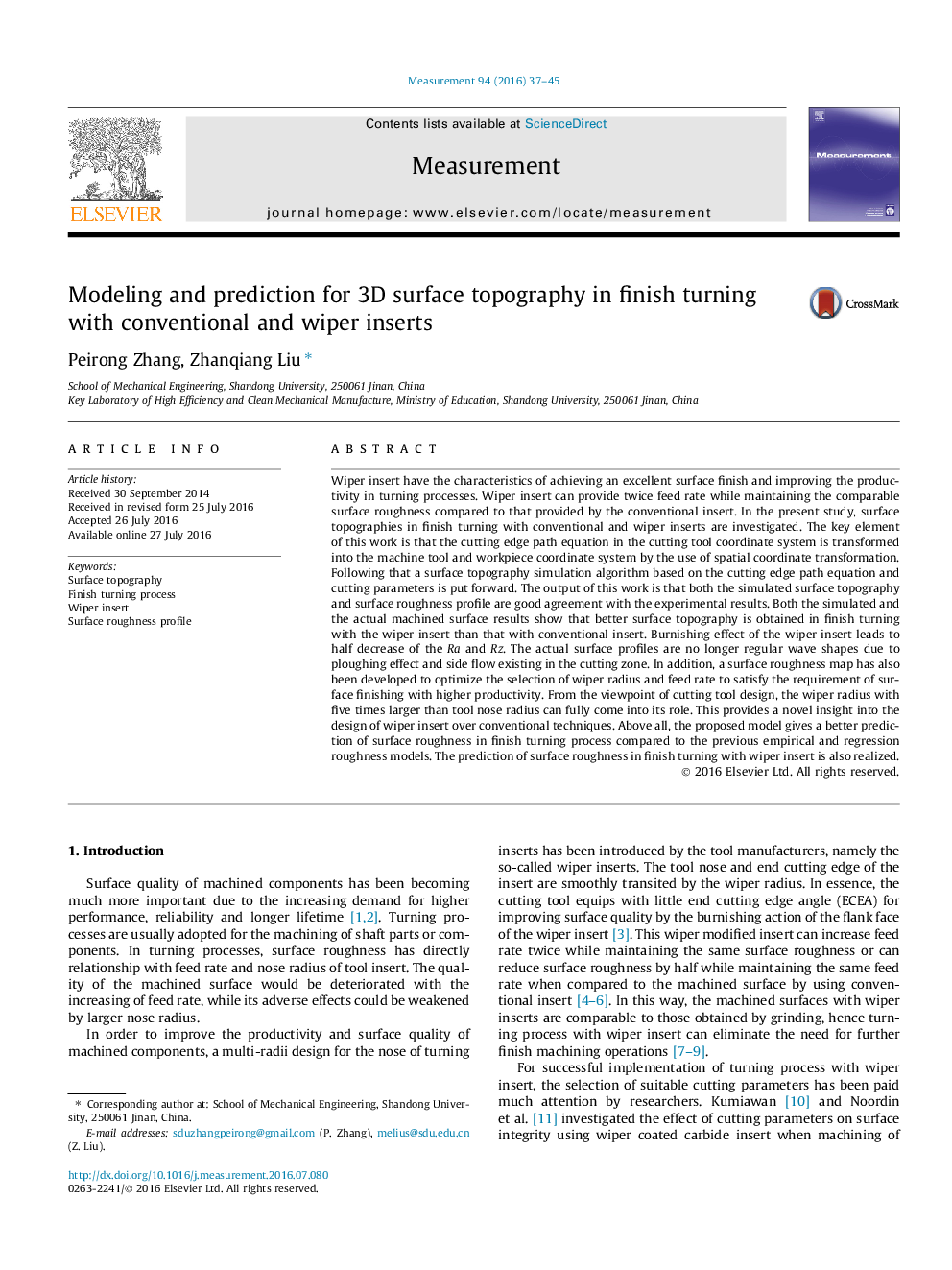| کد مقاله | کد نشریه | سال انتشار | مقاله انگلیسی | نسخه تمام متن |
|---|---|---|---|---|
| 729480 | 1461493 | 2016 | 9 صفحه PDF | دانلود رایگان |

• Surface topography model are proposed based on mathematics-kinematics methodology.
• Burnishing action of the wiper insert leads to one half decrease of Ra as well as Rz.
• Wiper radius with five times larger than tool nose radius fully comes into its role.
• The proposed model reduces calculation error for surface roughness prediction to 5–8%.
Wiper insert have the characteristics of achieving an excellent surface finish and improving the productivity in turning processes. Wiper insert can provide twice feed rate while maintaining the comparable surface roughness compared to that provided by the conventional insert. In the present study, surface topographies in finish turning with conventional and wiper inserts are investigated. The key element of this work is that the cutting edge path equation in the cutting tool coordinate system is transformed into the machine tool and workpiece coordinate system by the use of spatial coordinate transformation. Following that a surface topography simulation algorithm based on the cutting edge path equation and cutting parameters is put forward. The output of this work is that both the simulated surface topography and surface roughness profile are good agreement with the experimental results. Both the simulated and the actual machined surface results show that better surface topography is obtained in finish turning with the wiper insert than that with conventional insert. Burnishing effect of the wiper insert leads to half decrease of the Ra and Rz. The actual surface profiles are no longer regular wave shapes due to ploughing effect and side flow existing in the cutting zone. In addition, a surface roughness map has also been developed to optimize the selection of wiper radius and feed rate to satisfy the requirement of surface finishing with higher productivity. From the viewpoint of cutting tool design, the wiper radius with five times larger than tool nose radius can fully come into its role. This provides a novel insight into the design of wiper insert over conventional techniques. Above all, the proposed model gives a better prediction of surface roughness in finish turning process compared to the previous empirical and regression roughness models. The prediction of surface roughness in finish turning with wiper insert is also realized.
Journal: Measurement - Volume 94, December 2016, Pages 37–45